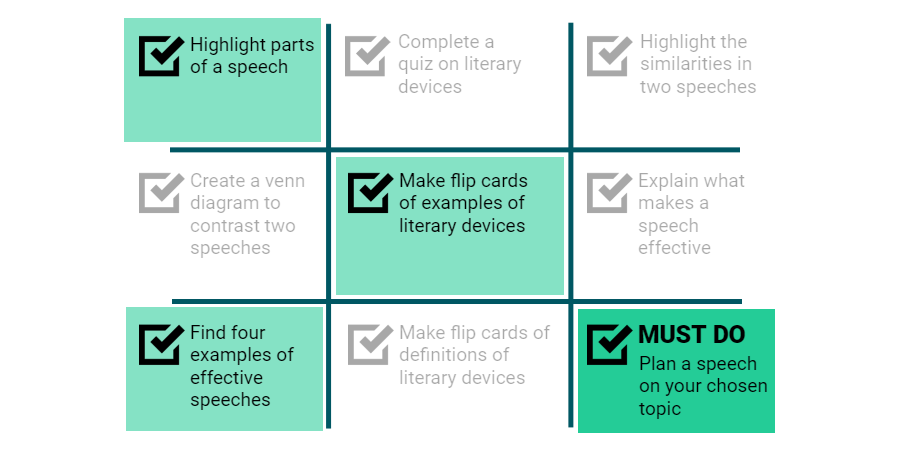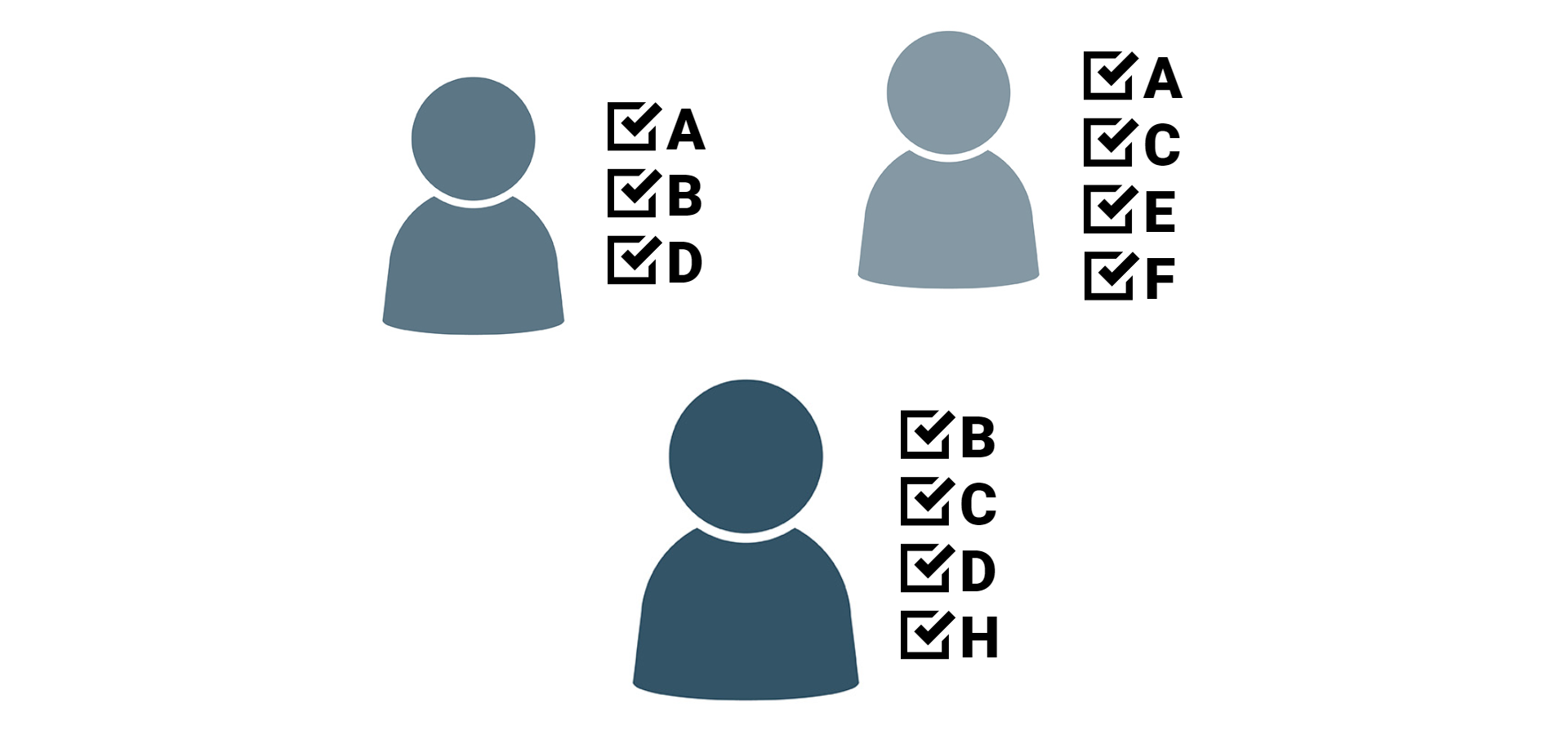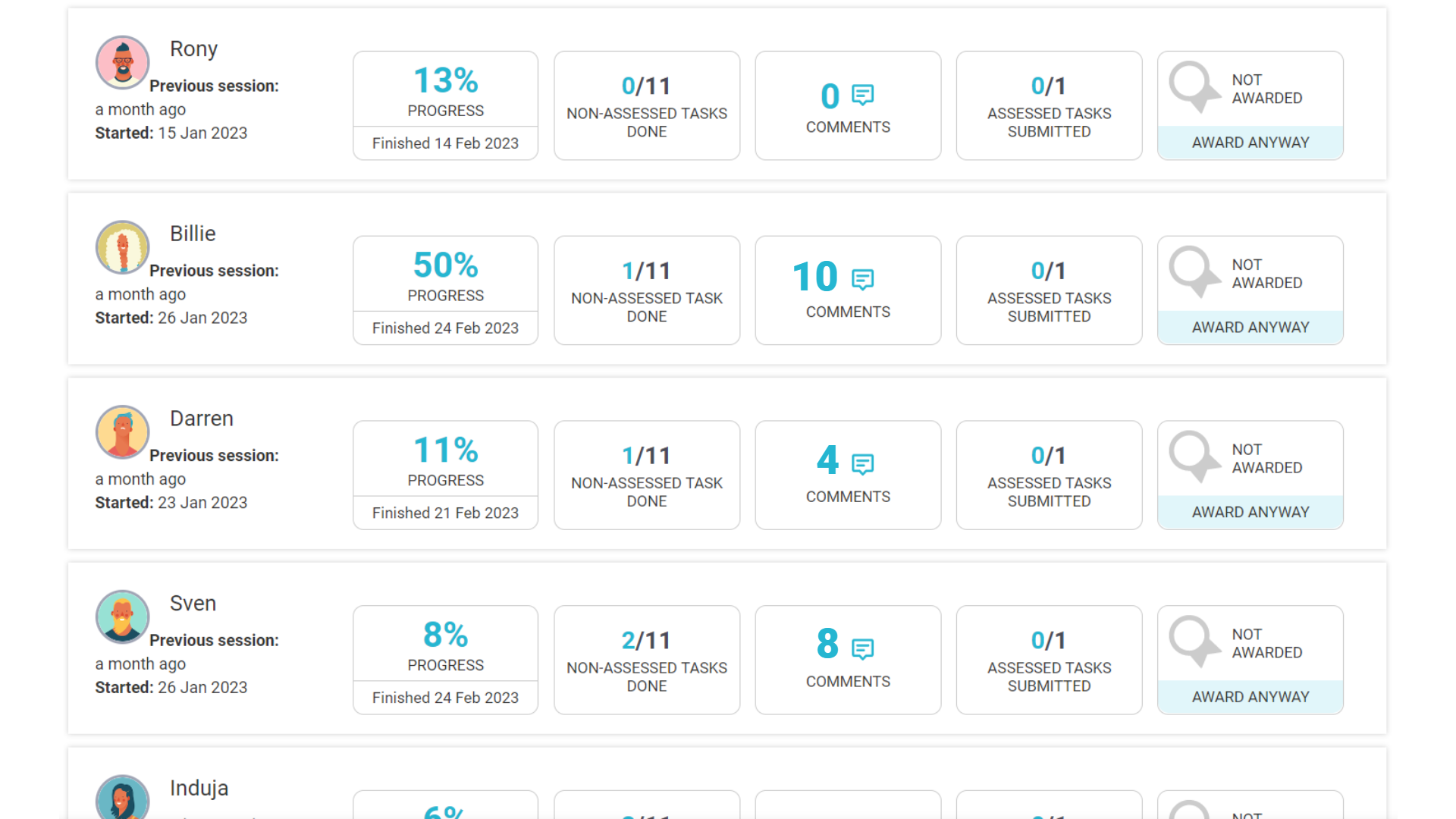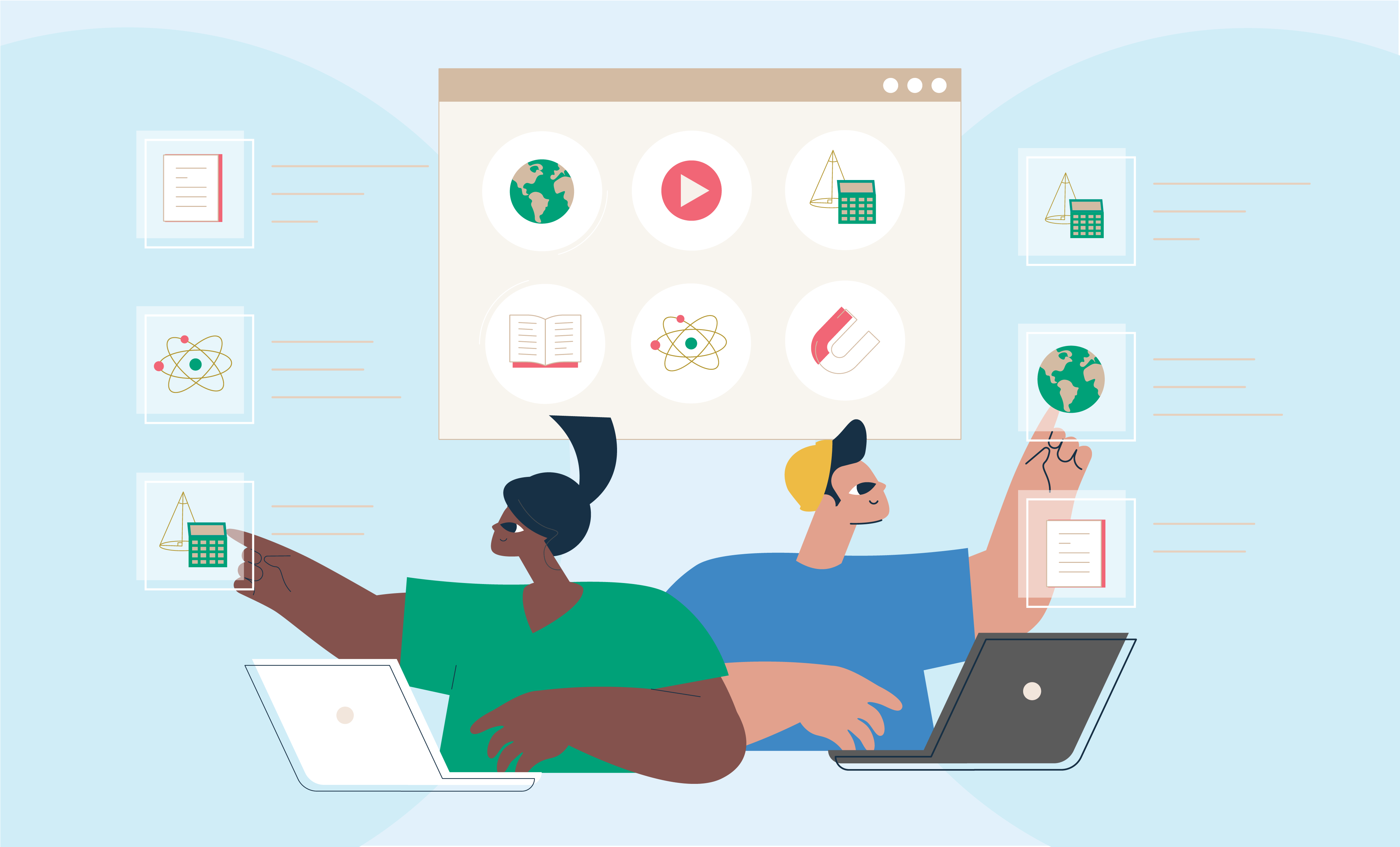A playlist is essentially a sequential list of tasks and learning experiences (some online, some offline) that learners are expected to complete in order to achieve a learning objective.
You can read more about playlists in our blog Playlists for blended learning.
Customised playlists in blended learning are where the particular tasks and learning experiences are selected specifically for different learners.
This kind of model might be really useful where learners have a mentor or industry trainer. The mentor assesses where a given learner is at, and assigns them relevant next steps.
Benefits
Playlists, even without being customised, have a number of benefits (detailed in our earlier blog on playlists).
When you add a level of customisation, the biggest benefit is that you're making the course more relevant for your learners.
Let's say you have all these tasks relating to understanding techniques used in speeches to help scaffold learners towards planning their own effective speech.
You might have a task that all learners must do (plan a speech), but the rest offer different paths to the same skills and knowledge. You needn't make learners do every task. You (or they) can be selective about which learners do which tasks.

When learners only have to do the tasks they need, it will add to their enjoyment of the course. And, if you’re getting learners to choose which items to complete within the playlist then you’re encouraging learner agency (which can enhance engagement even more).
Plus, when you're not making every learner do every task, it can also decrease the marking load for you. A win-win!
Challenges
The biggest challenge here is of course how to customise playlists for learners. Customisation can happen at different levels.
Playlists might be differentiated where different groups of learners have different sets of tasks and learning activities.

Or playlists might be personalised for each learner. For instance, Learner 1 is allocated playlist items A, B, and D, while Learner 2 has A, C, E, F and Learner 3 has items B, C, D, H.

In practice, this customisation can be achieved manually by the teacher/facilitator or by letting learners choose (more akin to a “choice board”).
Or you might be able to automatically customise the playlist with the help of an algorithm or artificial intelligence.
Customised playlists in iQualify
Our previous post on playlists details how typical playlist items might look in iQualify. So for this post, we'll focus just on how to achieve the customisation.
For personalisation (each learner has their own distinct set of playlist items) we think the easiest approach would be to have one course (and class) and direct each learner to complete their particular playlist items within the course. Or if learners are choosing their playlist items, some short guidance on how to choose their own.
The downside in a course where learners only complete some of the tasks is that learners will have tasks in their task list which are not complete and will not reach 100% progress. However, having all learners in the one class is useful for managing updates, social elements and marking as it's all in the one place.

Another option would be to opt for differentiation (groups of learners have their own sets of playlist items). With this option, you could use the same "base" course, but have sections with playlist items that you show or hide, depending on the group.
This allows you to only have to update the one course if there is text, media or a task that needs updating for all learners. If the groups are large enough, social elements can happen in that group's class activation. Otherwise, you could quickly set up a course just for the social elements.
Note: We admit that neither of these options is entirely perfect. But customisation is something we’re really keen on and we’ve got some ideas for what we’d like to work on in this space.
A template to help
We’ve created a Playlist Learning Course Template which you could use for either personalisation or differentiation right away. When you've added your content and tasks, simply choose whether you'll be giving each learner a list of playlist items to complete or whether you'll be hiding sections and creating a class activation for your differentiated groups of learners.
Summary
Customised playlists can be a little more difficult to implement, but they’re worth it as they can offer a very learner-centric model of blended learning.
If you’re not already using an iQualify course with tasks, check out our Playlist Learning Course Template. It has example text and tasks that you can quickly personalise to get up and running quickly. And, the great thing about iQualify is that you can iteratively publish so you really only need to be one step ahead of your learners.
Not with us yet and want to know if iQualify can work to replace your playlists and many, many learner docs? Sign up for a free trial or reach out to us for a chat.


